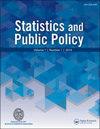谁是我的邻居?党派关系的空间效率
IF 1.5
Q2 SOCIAL SCIENCES, MATHEMATICAL METHODS
引用次数: 5
摘要
在过去的十年里,在美国的一些州,共和党在国会代表团和州立法机构中的代表人数过高。一个挑战是,要确定这在多大程度上可以用故意的不公正划分选区来解释,而不是用民主党在城市中潜在的低效分配来解释。我们解释了对民主党支持的“空间低效率”,并证明它在各州之间以及州内立法机构之间都存在很大差异。我们介绍了一种简单的方法,通过评估美国每个州每个选民最近邻居的党派关系来衡量这种低效率。我们对空间效率的衡量有助于解释立法代表权的跨州模式,并使我们能够验证政治地理对政治代表权的不平等有重大影响。然而,与此同时,我们也表明,即使在控制了空间效率之后,党派对重新划分过程的控制也对党派的席位份额产生了实质性影响。本文的补充材料可在网上获得。本文章由计算机程序翻译,如有差异,请以英文原文为准。
Who Is My Neighbor? The Spatial Efficiency of Partisanship
Abstract Relative to its overall statewide support, the Republican Party has been over-represented in congressional delegations and state legislatures over the last decade in a number of US states. A challenge is to determine the extent to which this can be explained by intentional gerrymandering as opposed to an underlying inefficient distribution of Democrats in cities. We explain the “spatial inefficiency” of support for Democrats, and demonstrate that it varies substantially both across states and also across legislative chambers within states. We introduce a simple method for measuring this inefficiency by assessing the partisanship of the nearest neighbors of each voter in each US state. Our measure of spatial efficiency helps explain cross-state patterns in legislative representation, and allows us to verify that political geography contributes substantially to inequalities in political representation. At the same time, however, we also show that even after controlling for spatial efficiency, partisan control of the redistricting process has had a substantial impact on the parties’ seat shares. Supplementary materials for this article are available online.
求助全文
通过发布文献求助,成功后即可免费获取论文全文。
去求助
来源期刊

Statistics and Public Policy
SOCIAL SCIENCES, MATHEMATICAL METHODS-
CiteScore
3.20
自引率
6.20%
发文量
13
审稿时长
32 weeks
 求助内容:
求助内容: 应助结果提醒方式:
应助结果提醒方式:


